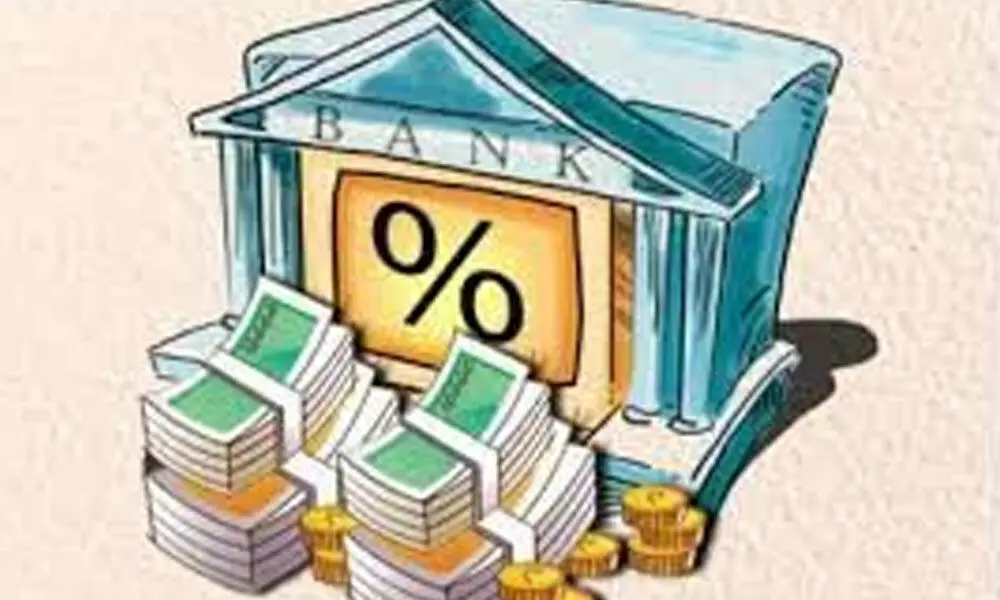PSBs outperform Bank Nifty
Frontline private banks including HDFC Bank, Axis, and NBFCs lag behind
image for illustrative purpose

Mumbai: Public-sector banks led the pack, while frontline private banks (HDFC Bank and Axis) and NBFCs underperformed the bank index. Stocks of Small Finance Banks (SFBs) saw some recovery after the decline in August. The price performance for the month showed lenders outperforming non-lenders (insurance and capital markets). Payment activity showed no new negatives but does not seem to be showing robust recovery either. Loan growth continues to be sluggish with no sharp recovery in any specific segment barring SME. A low interest rate environment continues, but spreads remain elevated, indicating lenders' reluctance to relax lending standards or weaker demand.
"On stock performance, we saw lenders outperforming non-lenders (insurance and capital markets). Within lenders, public banks led the pack, while frontline private banks (HDFC Bank and Axis) and NBFCs underperformed the bank index. Stocks of SFBs saw some recovery after the decline in August. On a 12-month horizon, PSU banks have outperformed the Bank Nifty quite meaningfully," says MB Mahesh, an analyst at Kotak Institutional Equities. A recovery in the economy, which gives more confidence on the commentary by banks on their collection efficiency levels along with resolution of a very large NPL (Dewan Housing), has probably aided this performance. We see a lot of conversation on fintech companies, especially on their models and its impact on Indian banks, he said.
Payment data points to a gradual recovery; loan growth shows no major recovery signs as yet Payment data indicates a gradual, not sharp, recovery in the economy is underway. The key challenge to convince, outside of asset quality, continues to remain on loan growth, which has not bounced back like the other segments within the financial services space. It is sluggish (<7 per cent levels currently) since Covid with negligible growth from the corporate segment and a marginally better performance on the retail side. The strong comments from the listed real estate developers on housing demand are not yet reflecting in better demand for housing loans, suggesting a more subdued recovery is probably underway or tendency to deleverage is high from a borrower's perspective.
Even growth in credit card outstanding is a bit volatile and quite contrasting to spends (strong growth), suggesting that deleveraging at consumer level is still dominating as a theme.
Interest rate environment is favorable, but NIM expansion unlikely. As per the latest data from RBI, deposit rates were flat mom at 5.1. Both private and PSU banks have reduced their TD rates by 60-70 bps over the past 12 months.
Wholesale deposit cost (as measured by CD rates) has seen a much sharper decline. It has been broadly stable in FY2022. The gap between repo and 1-year TD rate for SBI stands at 100 bps after declining from peak levels of ~130 bps. The premium of SBI TD rates over G-Sec yields has narrowed from its peak level.
The financial performance of PSB in particular and SCB in general has been improving. The profit , profitability, provision coverage and capital adequacy of PSB has been better. The recovery rate under IBC is at 40 per cent of the realisable value. The establishment of National Reconstruction Bank Limited (Bad Bank) and likely transfer of stressed assets of Rs 90000 crores is also an encouraging fact. It is in this background that PSB led the pack in Equity Market.
"Currently Banks have brought down substantially deposit rates which will help the Bank in reducing the cost of deposits. On the other hand lending rates have also come down substantially in line with RBI reducing the repo rate of 115 basis points. Banks have started offering attractive rates for housing loans in this festival season," M Narendra, former chairman and managing director, Indian Overseas Bank, told Bizz Buzz.
While Banks still aim at high volume business under retail lending margin may be maintained . The substantial recovery in Indian Economy may also help the Banks in growing their credit portfolio in this busy season, he said.
The collection efficiency under retail loans has also reached pre Covid levels. All this will be the encouraging trend in the performance of SCB and PSB in general, he added.
Lending rates on fresh loans were flat mom at 8.0 per cent for banks, despite a sharp 20 bps jump to 8.8 per cent for private banks.
"We have seen volatility in these rates in recent months, but nothing too material. PSU bank fresh lending rates declined 20 bps mom to 7.5 per cent. The gap between fresh lending rates of private and PSU banks has widened again to 130 bps, which is above the average of 100 bps over the past 12 months. The gap between outstanding and fresh lending rates has been in the range of 110-140 bps since the onset of Covid," says another analyst Nishint Chawathe.
Steep decline in bond market rates till July 2020 had led to a narrowing of the spread between bank funding and bond rates, but bond yields seem to be trending upwards now.
In previous notes, we have discussed the spreads (credit risk or duration) and found that lenders have been slow in passing the lower cost of funds. In recent months, we note that these spreads have not expanded either, suggesting that expansion of NIM is a low probability event, he said.

